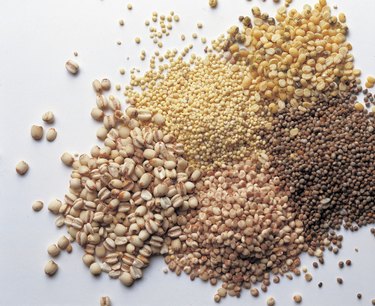
The amount of total carbohydrates in a serving of food corresponds to the sum of starches, sugars and dietary fiber. These different components can have different effect on your blood sugar levels and overall health, but are all defined as carbohydrates. Grains such as bread, rice, pasta, breakfast cereals and baked goods, and legumes such as beans and lentils contain significant amounts of carbohydrates per serving. Fruits, some dairy and sugar-containing foods also provide considerable amounts of carbohydrates.
Starch
Video of the Day
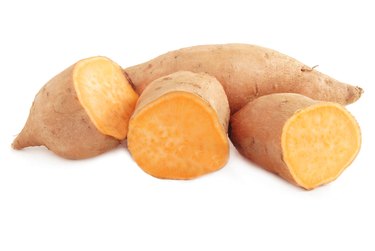
Starch is a polysaccharide, meaning it is composed of long chains of glucose, or sugar. When digested, digestive enzymes break down starches into single units of glucose, which are then able to enter your bloodstream and elevate your blood sugar levels. This circulating glucose triggers the release of insulin from your pancreas, which helps clear the glucose out of your blood into your cells where it is burned for energy, stored as glycogen or converted to fat for later use. Starch is mainly found in starchy vegetables such as potato, sweet potato, winter squash, corn and grains.
Video of the Day
Sugar
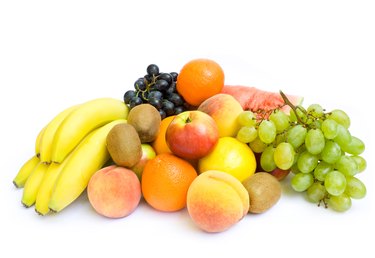
The sugars in food are mainly disaccharides, which corresponds to two molecules of sugar bound together. For example, the sugar in milk and yogurt is called lactose and is made of one molecule of glucose and one molecule of galactose. Sucrose, or table sugar, is made of one molecule of glucose and one molecule of fructose. Fruits mainly contain the fruit sugar know as fructose. High-fructose corn syrup contains a ratio of approximately 55 percent fructose and 45 percent glucose. Sugar-rich foods are easily broken down and contribute to raising your blood sugar levels and providing you with energy after a meal.
Dietary Fiber
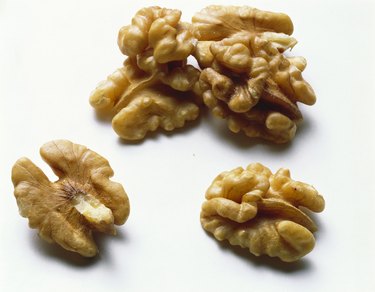
Dietary fiber is the part of the total carbohydrates that is not digested and broken down by your digestive enzymes. Fiber is a polysaccharide, but your digestive enzymes are unable to break the link binding its different units of glucose. Fiber goes through your gastrointestinal tract and is eliminated in your feces at the end of your intestinal transit. For this reason, fiber does not directly impact your blood sugar levels, nor does it provide energy, or calories, to your body. Whole grains, vegetables, fruits, legumes, nuts and seeds constitute excellent sources of fiber.
Digestible Carbohydrates
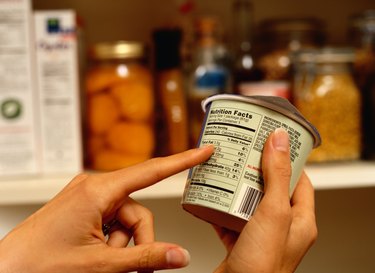
Digestible carbohydrates, also referred to as available carbohydrates or net carbs, correspond to the fraction of the total carbohydrates that is digestible and available to provide energy to your body cells. Digestible carbohydrates therefore corresponds to the total of the grams of starches and sugars in a serving of foods. An easy way to calculate digestible carbohydrates using the nutritional information available on food labels is to subtract the grams of dietary fiber from the total carbohydrates in a serving of food. For example, a slice of bread that contains 16 g of carbohydrates and 2 g of fiber would have a digestible carbohydrate content of 14 g.